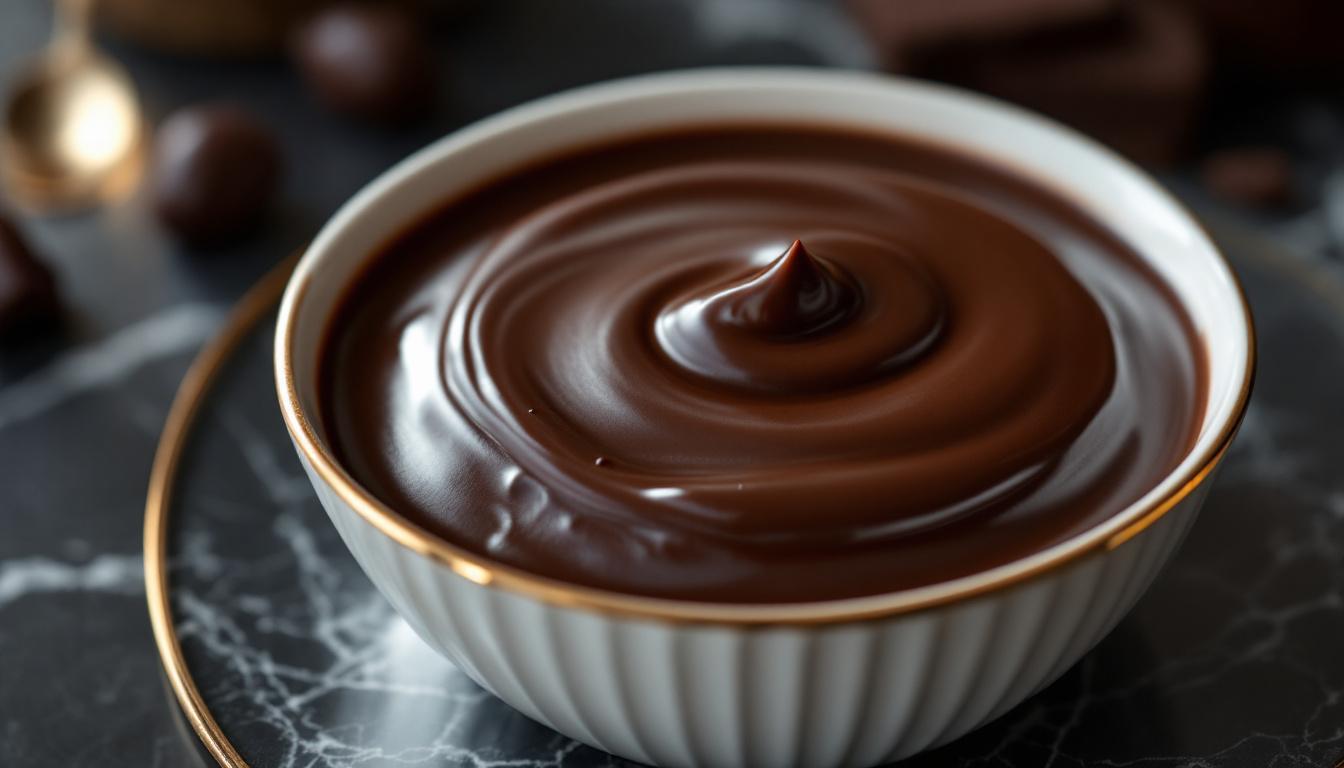During my time working in a small patisserie in Lyon, I discovered a recipe that has haunted me ever since – a silky chocolate pudding that seemed impossibly simple yet delivered profound depth. This authentic “Pudding au Chocolat” isn’t the bread-based dessert some might expect, but rather a luxurious custard that showcases chocolate in its purest form. What makes this dessert extraordinary is the careful balance between richness and lightness – a culinary paradox I’ve spent years perfecting. When done right, it melts on the tongue leaving nothing but pure chocolate essence behind.
The Story
French grandmothers have been making this pudding for generations, though they’d rarely call it “pudding” (that’s more of an adopted term). In traditional French homes, this would be called “crème au chocolat” or “pots de crème” – a silky custard that relies on the alchemy between egg yolks, dairy, and high-quality chocolate. The beauty lies in its restraint – just five ingredients transformed through proper technique into something transcendent.
I still remember watching Madame Fournier, the 70-year-old patissier who trained me, prepare this with barely a glance at measurements. “The pudding,” she would say, “knows when it’s ready.” After countless attempts, I’ve translated her intuition into precise instructions anyone can follow.
Ingredients Spotlight
For 6 servings:
- 170g (6oz) high-quality dark chocolate (60-70% cacao), finely chopped
- 240ml (1 cup) heavy cream
- 240ml (1 cup) whole milk
- 5 large egg yolks
- 3 tablespoons (35g) granulated sugar
- Pinch of flaky sea salt
- Optional: ½ teaspoon espresso powder (my secret enhancement)
The chocolate is non-negotiable – this is where you should splurge. Look for chocolate with pronounced fruity or nutty notes rather than overly bitter varieties. The espresso powder doesn’t make the pudding taste like coffee; it amplifies the chocolate’s natural complexity while cutting through the richness.
Step-by-Step Guide
- Place the chopped chocolate in a medium bowl with a fine-mesh strainer set over it.
- In a heavy saucepan, combine cream and milk; heat until tiny bubbles form around the edges (about 3 minutes).
- In a separate bowl, whisk egg yolks, sugar, and espresso powder (if using) until pale yellow and slightly thickened.
- Tempering technique: While whisking constantly, slowly pour about ½ cup of the hot cream mixture into the egg mixture. This gradually raises the temperature without scrambling the eggs.
- Pour the tempered egg mixture back into the saucepan with remaining cream.
- Cook over medium-low heat, stirring constantly with a wooden spoon, until the mixture thickens enough to coat the back of the spoon and reaches 175-180°F (79-82°C), about 4-6 minutes.
- Immediately pour through the strainer onto the chocolate. Let sit 1 minute, then gently stir until completely smooth.
- Divide among six 4-ounce ramekins and refrigerate at least 4 hours or overnight.
Expert Techniques
The magic of this pudding lies in proper tempering and knowing exactly when the custard has thickened enough. Here’s my failproof test: dip a wooden spoon into the mixture, then run your finger across the back. If it leaves a clear path that doesn’t immediately fill in, you’re ready.
Chef’s Note: Temperature control is crucial. If you see any sign of bubbling or boiling while cooking the custard, immediately remove from heat and continue stirring. Overheating will cause the proteins in the eggs to tighten too much, resulting in a grainy texture rather than silken perfection.
For an even more luxurious version, try replacing 60ml (¼ cup) of milk with an equal amount of dark rum or bourbon – the alcohol will enhance the aromatic compounds in the chocolate while adding subtle complexity.
Presentation & Pairing Ideas
Serve this pudding chilled but not ice-cold – about 15 minutes at room temperature allows the flavors to fully bloom. The traditional French way is unadorned, letting the chocolate speak for itself, but I love adding contrasting elements:
- A dollop of barely sweetened whipped cream
- Fresh raspberries or a spoonful of tart cherry compote
- Candied orange peel and a few grains of flaky sea salt
- A thin madeleine cookie for textural contrast
For an unexpected pairing, serve alongside a small glass of Turkish coffee or a nip of walnut liqueur. The bitter notes perfectly counterbalance the pudding’s richness. For a plant-based variation, you can substitute full-fat coconut milk and coconut cream, though the texture will be slightly different.
The true beauty of this recipe is how it teaches restraint. Master this simple custard, and you’ll understand why the greatest chefs often say: perfection isn’t when there’s nothing more to add, but when there’s nothing left to take away. 🍮✨
